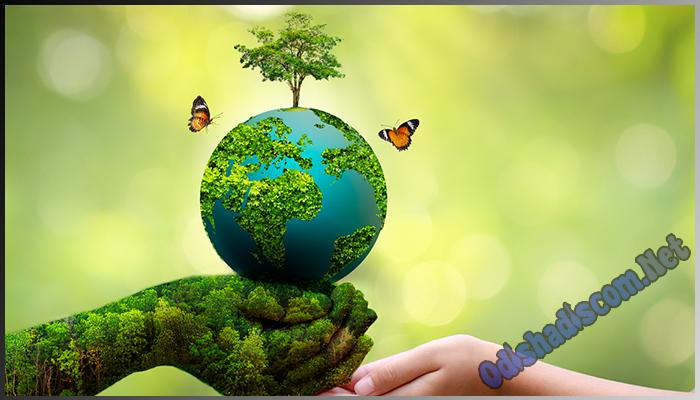What is the natural environment and its examples?
The physical realm housing all organic and inorganic objects existing spontaneously constitutes the natural environment. Within it thrive ecosystems endowed with exclusive resources sustaining fauna’s survival, like water bodies, soil types, plants as well as changes occurring due to shifting seasons. The dynamic backdrop of nature also undergoes influences from non-living elements.
Here are some examples of natural environments:
Moderate Woodland: These woodlands boasting species such as oaks, maples, and varying seasonal flora experience four climatic seasons. Animals residing here go into hibernation mode or remain largely dormant during cold spells to conserve energy.
Tropical Rainforests:
Daily downpours, stifling humidity indices coupled with temperatures averaging 90-100 degrees Fahrenheit characterize these rainforests found across Africa, Australia, southern parts of Asia and South America teeming with a wide range of plants and animals.
Northern Forests:
Situated across northern Europe, Asia and North America lies the boreal forests hosting white spruces, jackpines together with white birches and quivering aspens fully adapted into their bone-chilling dry environs.
Lakes and Ponds:
The land strip close to large water bodies like ponds and lakes, is abode to a variety of creatures including minute sea plants, seaweed, hydra, small shellfishes, snails, amphibians, and tiny fishes. Streams and
Rivers:
Water flows unidirectionally causing constant alterations in ecosystems due to instability in temperatures, depth, and flow speeds.
Oceans and Seas:
Over 70% of Earth’s covering is made up by oceans and seas where there exists a diverse mixture of marine life such as fish species, whales types ,dolphins breeds , sharks varieties as well the coral forests.
Wetlands:
Wetlands consist of marshes swamps bogs are places where soil remains covered with water or water remains near surface for at least one part of a year making it favorable for living organisms belonging to various categories of plants and animals.
Coral Reefs:
Coral reefs an underwater establishment constructed by corals provides sheltering homes for wide range diversity comprising numerous types of marine existence.
What makes a natural environment?
The physical realm:
Known as the natural environment encompasses life forms, weather, climate, and resources that impact our lives and economic activities. It is distinguished from artificial constructs.
Two key constituents define the natural environment:
Ecological entities: These are self-sustaining systems operating without notable human interference, such as flora, microorganisms, soil elements, rocks, atmospheric phenomena and nature intrinsic within their confines.
Universal natural resources and physical phenomena: Boundaries of phenomena like air, water, weather patterns, energy sources; radiation emissions; electrically charged particles; magnetic fields exist less clearly.
Urban development and agricultural land transformation modifies the natural milieu into a simplified human-crafted setting.
Why is the natural environment important?
The natural environment plays a critical role in our existence, offering necessities such as sustenance, hydration, and oxygen, along with leisure pursuits, inspiration, and spiritual rejuvenation. It also supports sectors like farming, logging, and fishing while providing prospects for tourism and recreation.
Forests, oceans, and other aspects of the natural environment significantly influence Earth’s climate and weather systems by absorbing carbon dioxide from the atmosphere. However, human-induced activities such as deforestation, pollution, and climate change pose significant threats to these environments necessitating their preservation for our own well-being and posterity.
How can we protect the natural environment?
Safeguarding nature’s splendor is crucial for our own well-being and succeeding generations. Ways to contribute to this noble cause are as follows:
- Lessen Consumption: Restricting consumption significantly influences the environment with the three “R’s” – namely reduce, reuse and recycle being extensively talked-about. However, Earth stands to benefit by
- spotlighting an underrepresented ‘R’: refuse which implies saying “no” to non-essential articles.
- Composting: Composting your food scraps along with yard waste prevents an astounding volume of trash from entering waste streams and creates fertility-abundant soil for your backyard.
- Opt for reusable versus disposable: Opting for reusable items such as cups, bottles, shopping bags, plates along with cutlery over throw-away ones presents a more sustainable plus ecologically-friendly choice.
- Upcycle more: Transform old items into handy or ornamental articles that confer them a brand new breath of life.
Recycle correctly: Adherence to local recycling guidelines ensures proper processing of recyclable goods. - Shop thrift: Opting for pre-owned stuff not only reduces demand for new items, but also curbs waste production.
Support local: The aim is to help neighborhood enterprises and farmers lessen the ecological effects of long cruises. - Minimize chemical usage: Pick green-cleaning products, cut pesticide use at home & garden.
- Walk, cycle or carpool: Scale back your carbon footprint by utilizing alternate transportation modes whenever possible.
- Use less water: Be water-efficient by fixing leaks, taking shorter showers and supporting firms that prioritize environment-friendly practices.
- Save energy: For lowered power consumption, switch off lights & gadgets when not in use, use energy-efficient appliances, consider solar panels if feasible.
In Conclusion
Human-made settings like cities and farmlands have considerably simplified nature’s complexities. Safeguarding natural environments is essential for the welfare of current and future generations. Embracing habits such as sustainable consumption practices composting utilization of reusable materials repurposing recycling patronizing thrift stores sourcing locally reducing chemical use opting for walking or biking conserving water electricity alongside supporting environmentally-conscious enterprises can help preserve these precious resources.
Click here to get more updates:
Odisha Discom – Environment Day Poster – Importance of the Environment – Environment Drawing – Business Environment.


